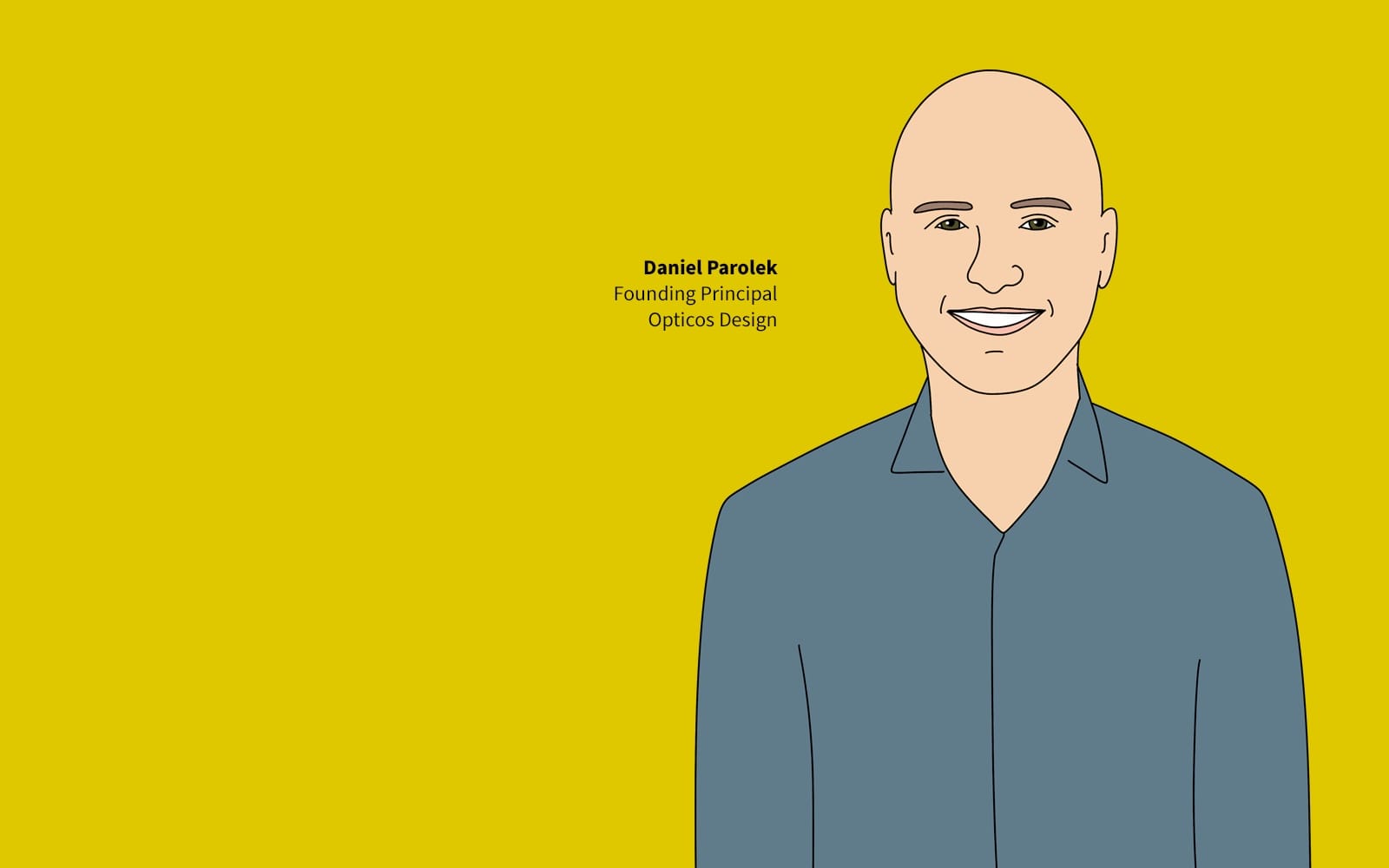Architecture
How Missing Middle Housing Wins Approval And Works
Architect and planner Dan Parolek coined the term “missing middle housing.” His firm’s projects prove that thoughtful design, political navigation, and local momentum can overcome entrenched zoning resistance.

[Architect and urban planner Dan Parolek coined the phrase "missing middle housing" more than a decade ago, and it is now a part of most conversations about how to solve housing shortages and improve affordability.
This article introduces a new series by contributing writer Richard Lawson that will get beyond the hype surrounding missing middle housing and delve more deeply into the successes with plans Parolek and his firm have created for cities, looking specifically at how they overcame opposition or reluctance to get them approved.]
After earning a master’s degree in urban design from the University of California at Berkeley, Dan Parolek couldn’t find a job as an architect who could also do urban planning and design. So, Parolek started his architectural firm, Opticos Design.
That was 25 years ago. Little did he know he’d end up coining a phrase that would become ubiquitous in nearly any conversation about solutions addressing housing shortages and affordability.
The "missing middle housing" concept didn’t emerge from a single moment of inspiration.
Instead, it evolved from a blend of personal and professional experiences that Parolek shaped gradually into an understanding and characterization of what was absent in recent or new housing development options.
His journey began in Columbus, his walkable Nebraska hometown, continued through the historic neighborhoods of North Chicago, and deepened as he observed various housing types.
His curiosity led him to explore and document these patterns further while studying at the University of Notre Dame, particularly in Madison, IN. Later, working in New York, he found himself in a Brooklyn neighborhood that genuinely felt like a community, one that reinforced his insights into the kinds of housing that foster vibrant, livable places.
Focusing on housing type wasn't new.
New urbanism, a trend gaining momentum in the 1980s, addressed different housing types. Parolek drew on noted urban planner Peter Katz's "The New Urbanism: Toward an Architecture of Community" in 1993, and "Town Making Principles" by Andres Duany and Elizabeth Plater-Zyberk, published in 1991. Katz, Duany, and Plater-Zyberk were among the founders of the Congress for New Urbanism in 1993.
While new urbanism detailed different housing types, there wasn't a catchy name for the type percolating in Parolek's mind.
Parolek saw potential after successfully creating a small Southern California town plan. In 2010, he first started using "missing middle housing" on presentation slides at a Seattle smart growth conference to describe the medium-density types of housing needed to meet a demand for walkable communities.
A 2013 article for Smart Growth Network added heft to his advocacy for bringing back a style of housing — duplexes, triplexes, and fourplexes — that had all but vanished for decades, mainly after being zoned out of existence.
The interest really took off” after the article, Parolek tells The Builder’s Daily. “It was fuel to the fire.”
Today, urban planners, architects, and developers are pushing to build missing middle housing to solve the housing shortage and close the housing affordability gap plaguing communities. Not infrequently, those pushing for missing middle housing are unaware of Parolek’s role in giving that "household name" to such initiatives.
A drumbeat for middle missing grows louder, almost as if little of it has been built. Much of the attention focuses on the fights among community activists who aim to prevent zoning changes that would green-light missing middle housing development.
While there are no comprehensive statistics, it’s fair to say a lot of missing middle housing has been built over the years. And some missing middle success stories may not be in locations folks would typically believe it could have been built.
Take Beaufort, SC, for example.
Replacing Traditional Zoning
As communities seek ways to enable more missing middle housing development, one key strategy has been to rethink the zoning rules that have long limited these housing types.
Missing middle housing typically fits within the form-based zoning code, an alternative to traditional zoning that has been gaining traction. The code is a legally binding land development regulation that organizes development based on the physical form and design of buildings and public spaces rather than by separating land uses.
Unlike traditional zoning, form-based code emphasizes the physical form of the built environment, such as building placement, massing, and relationship to the street, rather than focusing primarily on land-use or density.
Missing middle is the type of housing incorporated into plans, including duplexes, triplexes, fourplexes, townhouses, cottage courts, and bungalow courts that are compatible in scale with single-family homes.
The form-based code replaces Euclidian zoning, which was named after the 1926 Supreme Court decision in the Village of Euclid v. Amber Realty Co. To prevent Cleveland industrialization from spreading into the village, Euclid had passed zoning ordinances that divided the area into six distinct use categories and imposed various restrictions on building height and lot size. Amber sued and lost.
At the federal level, the Standard State Zoning Enabling Act established a model law for state and local government that encouraged the type of zoning structure the Supreme Court blessed in its ruling.
Single-family zoning expanded and exploded after World War II, wiping out much of what qualified as medium density. Housing was either single-family detached or large multifamily. The two were seldom allowed to mix.
The codes became more rigid. Urban sprawl ballooned with car dependency, leading to people yearning for walkable communities. That isn’t easy to achieve with curvy suburban streets without sidewalks.
Form-based Code Evolves
Modern form-based code took off in 1982, with a design code for the resort town of Seaside, FL. Seaside was the first serious attempt to establish a comprehensive, parcel-mapped regulatory framework focused on urban form.
New urbanism became increasingly popular due to the desire for walkability and a mix of housing and commercial uses within communities.
Parolek wrote his first form-based codes in the early 2000s for Isle Vista, which is next to the University of California, Santa Barbara, and Idaho Falls, ID. His firm also worked on a new plan for Seaside to guide its evolution, which included having an office there from 2005 to 2008.
In 2007, he wrote a book with his wife and Paul Crawford, a planner and founding board chair of the Form-Based Codes Institute, titled Form-Based Codes: A Guide for Planners, Urban Designers, Municipalities, and Developers.
Opticos has worked with cities nationwide, including Tennessee cities Memphis and Knoxville; Kauai County, HI; Kenmore, WA; Greenville, SC; Greensboro, NC; Iowa City; and Omaha suburb Papillion.
Parolek’s firm designed Culdesac Tempe, a car-free neighborhood built from the ground up in Tempe, AZ.
One of its most recent wins came in Athens, GA, where its missing middle neighborhood application was approved in March. It includes roughly 600-plus missing middle units on a 57-acre site. While Athens is known for the University of Georgia, the development wasn’t designed with students in mind.
That was great news because historically, it's just one of those places that are hard to get entitlement to,” Parolek says. "The planning staff was super supportive and excited about it, and they just had to help navigate it through the politics. Even the politicians were excited that somebody's doing something other than kind of the dumb student housing projects that every college town is getting.”
With any missing middle effort, challenges come with the territory. In this case, it was engineering and street standards. Parolek aims to narrow streets to slow traffic and increase pedestrian safety. After all, it’s supposed to be a walkable community.
We see this a lot,” he says. “The city adopted Complete Streets policies and Vision Zero policies, which target zero pedestrian deaths, but the engineers still won't stray from their high-speed thoroughfare standards.”
They reached a compromise solution, but Parolek says,
I can't believe we're still fighting that battle, sort of 25 years in, on a city-by-city basis.”
Overcoming Objections
Negotiating worked in Athens. A big question, however, is how to convince local officials and neighborhood groups of the missing middle housing approach.
Greenfield developments tend to be less troublesome, although not perfectly easy. Trying to do infill, however, proves more challenging. Neighborhood groups have been powerful forces in thwarting middle missing housing efforts that mean ending single-family zoning.
Parolek has met those challenges in places like Sacramento, where he and his team succeeded in creating a citywide missing middle strategy. He says it’s one of the most progressive ones he’s done.
The key was effective visual communication to show how the scaling would look within neighborhoods.
It has worked with greenfield in smaller cities. Around the time Parolek wrote about and did speaking engagements on missing middle housing, Beaufort County, SC, engaged his firm to develop a form-based code plan to manage future growth.
Beaufort, the largest city in the county, and other small towns sought to protect environmentally sensitive areas. Beaufort sits along a tidal arm of the Atlantic and is noted for extensive salt marshes.
The public selling point, however, wasn’t preserving the environment and sustainability. Palolek says the discussion was framed as protecting the area’s rural character. Developers also had to be convinced.
They were a little bit anxious about it at first, but when they had their consultants test it on their own, they realized that it increased the flexibility and development potential on their sites,” Parolek says.
Over the past decade, developments sprang up under the form-based code. The code set the county up to address a need for more missing middle housing when the availability of workforce housing became limited. Like many places around the country, housing prices rose during the COVID-19 pandemic, putting pressure on affordability.
Creating more affordable housing is an objective of those urging for middle housing.
Let’s help everyone find a home,” Parolek wrote in the preface of his 2020 book “Missing Middle Housing: Thinking Big and Building Small to Respond to Today’s Housing Crisis” with University of Arizona urban planning and real estate development professor Arthur Nelson.
Parolek and legions of others believe that thoughtful design and inclusive policies can bridge the gap between housing shortages and the dream of vibrant, walkable communities for all.
Real-world successes demonstrate that missing middle housing isn’t some quixotic quest. Despite persistent challenges and resistance, meaningful progress is possible when planners, officials, and communities work together to rethink old paradigms.
MORE IN Architecture
Car-Free, Heat-Smart, People-First: Culdesac’s Bold Model
Architect Daniel Parolek and Opticos Design answered with Culdesac Tempe, the nation’s first purpose-built, car-free community. With shade-rich design, missing middle housing, and a self-sustaining mix of homes and businesses, it’s a climate-conscious model now scaling to nearby Mesa.
How A Gamble On Floor Plans Can Be a Win for Homebuilders
If done right, floor plans can remove uncertainty for homebuyers and help builders close the sale. My top advice: Keep things simple, and make sure your teams understand how to read plans.
How Tim O’Brien Homes Is Re-Wiring Its Buyers' Experience
In a market defined by hesitation, speed and certainty separate survivors from stragglers. Tim O’Brien Homes shows how technology can deliver both.
